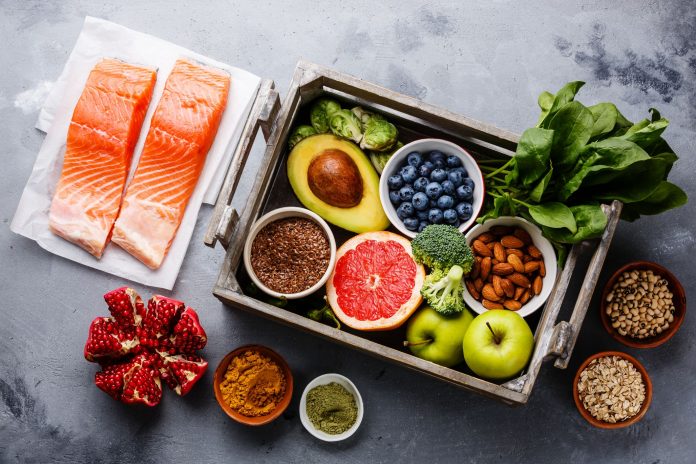When your blood pressure rises to dangerously high levels, you have high blood pressure, often known as hypertension.
The amount of blood flowing through your blood arteries and the resistance the blood encounters when the heart pumps determine your blood pressure.
Usually, it takes several years for hypertension to develop. In most cases, no symptoms are apparent.
But hypertension can harm your blood vessels and organs, particularly the kidneys, heart, brain, and eyes, even if you don’t have any symptoms.
Early identification is crucial. Frequent blood pressure checks can assist both your physician and you in identifying any changes.
If your blood pressure is elevated, your doctor might want you to monitor it for a few weeks to determine if it returns to normal or remains elevated.
Research has shown that having certain foods in your diet, especially those high in particular nutrients like potassium and magnesium, lowers your blood pressure levels.
A balanced diet is crucial for decreasing blood pressure and maintaining ideal levels.
The following foods are the best for high blood pressure:
1.Salmon and other fatty fish
Omega-3 fats, which provide major heart health benefits, are abundant in fatty fish.
Through their ability to lower inflammation and blood-vessel-constricting molecules called oxylipins, these fats may help lower blood pressure.
2.Fruits of citrus
Citrus fruits, such as grapefruit, oranges, and lemons, have the potential to significantly decrease blood pressure.
They include an abundance of vitamins, minerals, and plant chemicals that may lower heart disease risk factors including high blood pressure and maintain the health of your heart.
3.Lentils and beans
Fiber, magnesium, and potassium, among other nutrients, are abundant in beans and lentils and help control blood pressure.
Eating lentils and beans has been linked to a potential reduction in high blood pressure, according to numerous research.
4.Berries
Berries have been linked to several noteworthy health advantages, such as the ability to lower heart disease risk factors like high blood pressure.
Antioxidants such as anthocyanins, the pigments responsible for berries’ vivid color, are abundant in berries.
It has been demonstrated that anthocyanins raise blood levels of nitric oxide and decrease the synthesis of molecules that restrict blood vessels, which may help lower blood pressure.
However, additional human research is required to validate these putative processes.
Several berries have been linked to decreasing blood pressure, including cloudberries, strawberries, blueberries, raspberries, and chokeberries.
5.Bananas
One of the most important minerals for controlling hypertension is potassium, which is abundant in bananas. Approximately 422 milligrams of potassium are included in one medium banana.
The American Heart Association states that potassium eases blood vessel wall tension and lessens the effects of sodium.
6.Beets
Short- and long-term blood pressure reduction is possible with beet juice consumption.The researchers hypothesized that the drop in blood pressure was brought on by the high quantities of inorganic nitrate found in beets.
Beets can be prepared as a nutritious side dish, added to salads, or made into a glass of juice to drink every day.
7.Pumpkin seeds
Despite their small size, pumpkin seeds are incredibly nutritious:
They provide a concentrated source of nutrients that are vital for controlling blood pressure, such as potassium, magnesium, and arginine, an amino acid required for the synthesis of nitric oxide, which is vital for lowering blood pressure and relaxing blood vessels.
It has also been demonstrated that pumpkin seed oil is an effective natural treatment for high blood pressure.
8.Dark Chocolate
This sugary confection could reduce blood pressure. Chocolate high in cocoa may lower blood pressure in those with hypertension or prehypertension, according to a study of 15 research.
Select chocolate that is of a good caliber and has at least 70% cocoa content. Eat one square, or roughly one ounce, of chocolate per day.
9.Kiwis
For those with slightly raised blood pressure, a daily intake of kiwis can help lower it. Vitamin C, which is abundant in kiwis, has the potential to markedly lower blood pressure readings.
10.Watermelon
Citrulline, an amino acid found in watermelon, may help control high blood pressure.Nitric oxide, a gas that relaxes blood vessels and promotes artery flexibility, is produced by the body with the aid of citrulline. These actions facilitate blood flow, which helps reduce hypertension.
11.Pistachios
Nutritious to the extreme are pistachios. They support the maintenance of normal blood pressure levels. They are rich in potassium and other nutrients that are vital for heart health and blood pressure control.
12.Carrots
Carrots are a staple vegetable in many diets because they are sweet, crunchy, and nutrient-dense. Carrots are rich in phenolic chemicals, including caffeic, p-coumaric, and chlorogenic acids, which help lower blood pressure by reducing inflammation and relaxing blood vessels.
Carrots can be eaten raw or cooked, although eating them raw might be better for lowering blood pressure.
13.Tomatoes
Tomatoes and tomato products are rich in many nutrients, including potassium and the carotenoid pigment lycopene.
Lycopene has been significantly associated with beneficial effects on heart health.Eating foods high in this nutrient, such as tomato products, may help reduce heart disease risk factors like high blood pressure.
14.Seeds of chia and flax
The tiny seeds of chia and flax are packed with minerals, like potassium, magnesium, and fiber, that are critical for normal blood pressure regulation.
15. Spinach
Similar to beets, spinach has a lot of nitrates. Antioxidants, potassium, calcium, and magnesium are abundant in it.Thus, it’s a great option for those who have high blood pressure.
Additionally, the spinach soup lessens arterial stiffness, which may lower blood pressure and enhance heart health.
16.Oats
Beta-glucan, a type of fiber found in oats, has the potential to lower blood cholesterol levels. Certain studies have suggested that beta-glucan may also reduce blood pressure.
Start your day with a bowl of oatmeal, or add texture to meat or veggie burger patties by using rolled oats in place of breadcrumbs.
17.Natural yogurt
Dairy products high in nutrients include Greek yogurt. It is full of minerals, such as calcium and potassium, which help control blood pressure.
18.Cinnamon
Additionally, cinnamon might lower blood pressure—at least temporarily.Replace sugar in your diet with a sprinkle of cinnamon over your cereal or fresh cut fruit.
19.Garlic
A natural dietary antifungal and antibiotic is garlic. Allicin, the primary active component, is frequently in charge of the related health advantages.
Garlic may help the body produce more nitric oxide, which facilitates the relaxation of smooth muscles and the dilation of blood vessels, according to some research.
These modifications can lower blood pressure.Stir-fries, soups, and omelets are just a few of the savory dishes that benefit from the addition of garlic flavor. Garlic can further improve heart health when used in place of salt.
20.Pomegranates
For 28 days, consuming one cup of pomegranate juice every day can temporarily lower high blood pressure. The fruit’s antioxidant content was the reason given by the researchers for this impact.
Make sure there is no added sugar when purchasing pomegranate juice that has already been packaged.
























